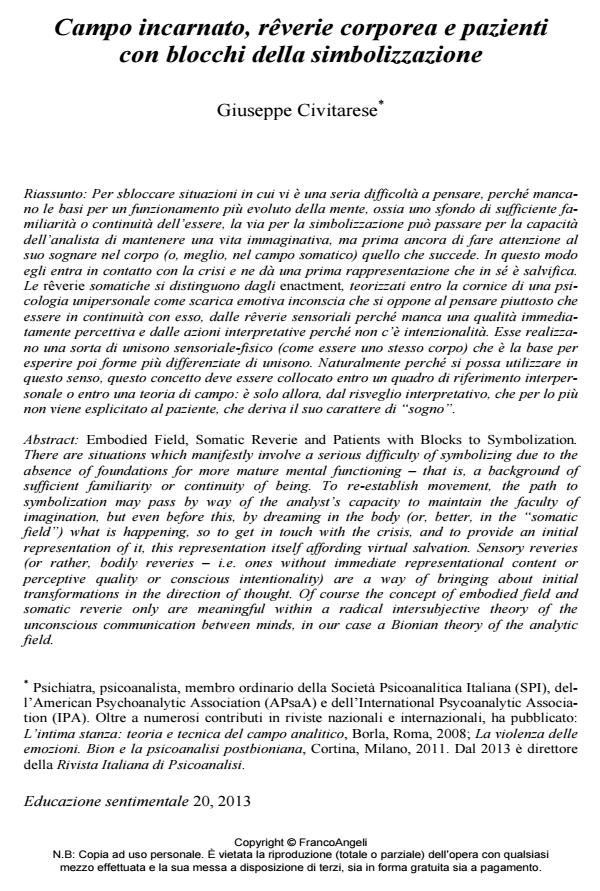Campo incarnato, rêverie corporea e pazienti con blocchi della simbolizzazione
Journal title EDUCAZIONE SENTIMENTALE
Author/s Giuseppe Civitarese
Publishing Year 2013 Issue 2013/20
Language Italian Pages 7 P. 25-31 File size 642 KB
DOI 10.3280/EDS2013-020003
DOI is like a bar code for intellectual property: to have more infomation
click here
Below, you can see the article first page
If you want to buy this article in PDF format, you can do it, following the instructions to buy download credits

FrancoAngeli is member of Publishers International Linking Association, Inc (PILA), a not-for-profit association which run the CrossRef service enabling links to and from online scholarly content.
Embodied Field, Somatic Reverie and Patients with Blocks to Symbolization. There are situations which manifestly involve a serious difficulty of symbolizing due to the absence of foundations for more mature mental functioning - that is, a background of sufficient familiarity or continuity of being. To re-establish movement, the path to symbolization may pass by way of the analyst’s capacity to maintain the faculty of imagination, but even before this, by dreaming in the body (or, better, in the "somatic field") what is happening, so to get in touch with the crisis, and to provide an initial representation of it, this representation itself affording virtual salvation. Sensory reveries (or rather, bodily reveries i.e. ones without immediate representational content or perceptive quality or conscious intentionality) are a way of bringing about initial transformations in the direction of thought. Of course the concept of embodied field and somatic reverie only are meaningful within a radical intersubjective theory of the unconscious communication between minds, in our case a Bionian theory of the analytic field.
Giuseppe Civitarese, Campo incarnato, rêverie corporea e pazienti con blocchi della simbolizzazione in "EDUCAZIONE SENTIMENTALE" 20/2013, pp 25-31, DOI: 10.3280/EDS2013-020003